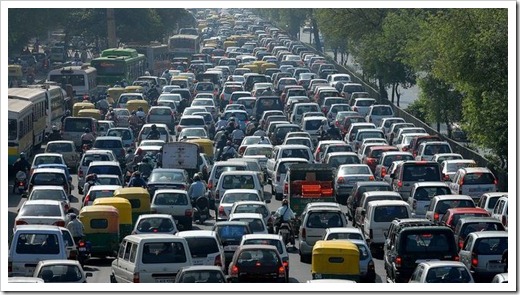It’s Raining New Cars in India…Drivers and Roads Must Catch up!
India is witnessing an unprecedented wave of stunning cars hitting the India automobile market.
Mahindra now has the mini-SUV Quanto on offer, which is a shortened version of the Xylo.
Chevrolet is preparing to launch new car called Sail which is expected to compete with popular hatchback options like Maruti’s Swift.
Volkswagen is revving up to diversify the market with both the soon-to-be-launched Volkswagen Up, a low priced car and the just-launched Touareg that is priced at Rs. 58.5 lakh.
Mercedes-Benz has now brought the B-class hatchback to India, the lowest-priced offering from the company so far, with versions costing from Rs. 21.5 lakh to Rs. 24.9 lakh.
Major players are keeping an eye on the upcoming festive season to register satisfactory sales, which have been affected by the rising fuel prices.
Hitting the Dangerous Roads
While Indian cars continue to get flashier, consistent with the burgeoning middle class, there are certain odds against the eye-catchers on wheels.
The Delhi-Gurgaon expressway now witnesses an average of one death every week. There have been 6,000 accidents ever since the road was thrown open to the public in 2008.
The 94-kilometer Pune-Mumbai expressway has seen a total of 680 deaths since 2005, with over 70 people having already lost their lives during 2012.
The 165-kilometer Yamuna Expressway, which was inaugurated on 9 August, 2012 as the longest expressway in India, has seen over a dozen lives lost to high-speed crashes in less than a month since it was opened.
Closer to major urban areas, traffic dangers often refuse to disappear. Rains leave behind long stretches of cratered roads, and congestion and parking trouble near key shopping areas overshadow comfortable cruises. And, every driver’s sense of urgency in getting ahead of others only serves to make matters worse.
The Solution?
Distress on the roads – right from fender benders to deadly crashes – is caused mostly by driver error. Poorly maintained roads come second on the blame list. In extremely rare cases, we get to hear of boulders falling on cars or fissures from earthquakes swallowing up cruising vehicles.
Better driving habits need to be taught and learnt – the focus is on safety and fuel efficiency. Speed radars and CCTV cameras ought to be functional and offenders brought to book.
On concrete expressways such as the Pune-Mumbai expressway that I use, frictional heat is generated more easily, with the result that over speeding and inadequate tire care are considered responsible for most deaths. I also see lane discipline on that road getting scant attention from vehicles of all sizes.
Additionally, good public transport can reduce traffic snarls and spare cars for pleasant weekend road trips – Mumbai’s Brihanmumbai Electric Supplies and Transport (BEST) is an oft-quoted example and can serve as a role model for others who would love to change for the better.
Major transport projects such as Mumbai’s Metro that is expected to be accomplished in all respects by 2021 offer hope in taking thousands of private vehicles off the roads during daily rush hours.
If the challenges revolving around drivers looking for thrills and an infrastructure struggling to cope are addressed, owning some of the finest cars in India will surely be more satisfying for buyers.


yes Indian road r are not good but these days car manufacturer are adjusting according to Indian roads. As far as traffic accidents are concern… these are all about drivers skill and road safety knowledge. great article…